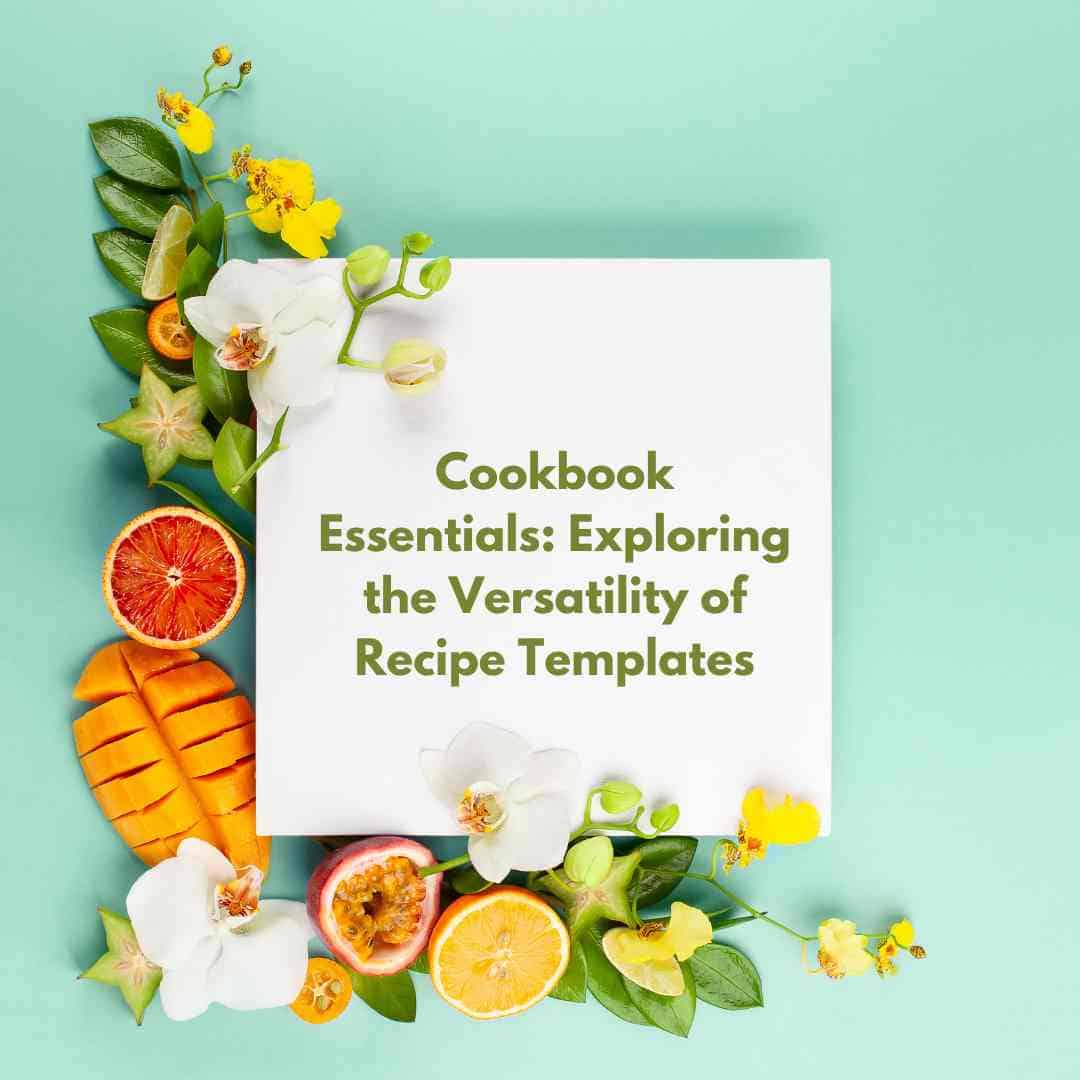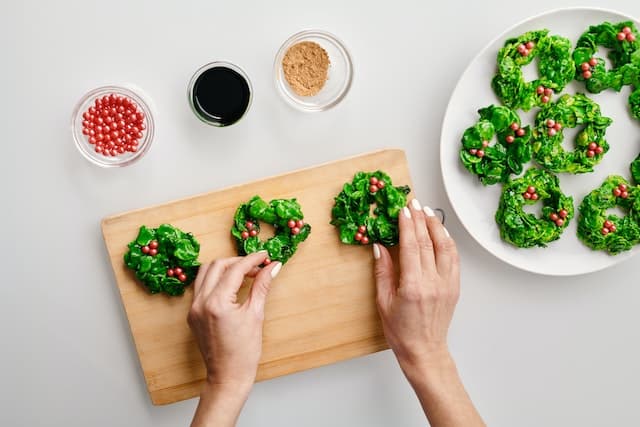
As the digital world continues to evolve, food blogging has taken center stage, providing a platform for passionate culinary artists to share their gastronomic adventures with a broad audience.
Among the many tools that elevate the food blogging experience, recipe templates are versatile assets that empower bloggers to create mouth-watering content while maintaining a consistent and organized presentation.
This post delves into the limitless possibilities of recipe templates and their profound impact on the food blogging landscape.
Components of a Recipe Template
Recipe templates provide food bloggers with a convenient framework for formatting their recipes in an organized and consistent way. This design includes several essential elements.
Title and Introduction
The title and introduction of a recipe template serve as the delicious gateway to the culinary journey ahead. A well-crafted title captures the dish’s essence, while the introduction provides context, history, or personal anecdotes about the recipe. This section sparks interest and sets the tone for the entire cooking experience.
Ingredients List
The ingredients list is the blueprint of any recipe template, and accurate measurements are its cornerstones. Precise measurements ensure consistency and the desired outcome of the dish.
Whether it’s a pinch of seasoning or a cup of flour, accurate quantities are crucial for achieving the intended taste and texture.
The ingredients list is often divided into categories, making it easier for the cook to gather and organize items. Common groups might include:
- Vegetables
- Proteins
- Spices
- Liquids
- Garnishes
This arrangement simplifies the cooking process, reducing the likelihood of overlooking key components.
Cooking Instructions
The heart of a recipe template lies in the cooking instructions. This section provides a detailed, sequential guide to transforming raw ingredients into a masterpiece. Each step should be clear, concise, and easy to follow, guiding the cook through various techniques such as chopping, sautéing, or baking.
Well-structured cooking instructions include essential details, such as cooking times, temperatures, and specific actions.
Using bullet points, numbering, and bold text can help highlight crucial steps, ensuring the cook stays on track.
Additional Sections
Recipe templates often include optional sections, such as serving suggestions and nutritional information:
- Plating and Decorations: Visual presentation is crucial for many dishes. Plating and decoration suggestions can bring a meal to life. This section provides vibrant finishing ideas to enhance any dish’s aesthetic appeal, transforming it from ordinary to extraordinary.
- Nutritional Information: For health-conscious individuals, including nutritional information offers insight into the caloric, macronutrient, and micronutrient content of the dish. This data empowers cooks to make informed dietary choices and adapt the recipe to their nutritional needs.
- Serving Suggestions: Serving suggestions provide creative ideas for plating, garnishing, and accompanying the dish. This section enhances the dining experience by suggesting complementary flavors and textures that elevate the meal.
- Variations and Substitutions: Cooking is an art, and recipe templates acknowledge this by offering variations and substitutions. This section encourages experimentation and adaptation, allowing cooks to tailor the recipe to their preferences, dietary restrictions, or ingredient availability.
These extra components offer valuable insights regarding the dish, giving the cook a better understanding of what they are creating. The additional sections also allow for experimentation and exploration, inspiring creativity and culinary innovation.
Advantages of Using Recipe Templates
Recipe templates are the unsung heroes of food blogging. They provide a structured framework that streamlines the process of sharing recipes, making it easy for bloggers to present visually appealing and organized culinary creations.
Whether you’re a seasoned food blogger or just starting, recipe templates offer a host of benefits that can elevate your content to new heights.
Consistency and Branding
Recipe templates help establish a consistent brand identity by providing a standardized format for presenting recipes.
From ingredient lists and instructions to serving suggestions and nutritional information, these templates ensure readers enjoy a familiar and professional experience with each post.
For instance, if your blog features a signature font and color palette, you can select a template that matches these details. This format helps readers to recognize your content at first glance, reinforcing the unique identity of your blog.
Time Efficiency
For our professionally-minded audience, time is of the essence. Recipe templates significantly reduce the time spent on formatting and structuring content, allowing bloggers to focus more on the creative aspects of their posts. This efficiency is invaluable, especially when managing a busy schedule.
If you’re a food blogger or content creator who juggles multiple projects, recipe templates can help you maximize productivity and keep your content on track. You’ll quickly see efficient organization when using recipe templates on your blog.
By automating the structuring process, you can use your time better and produce more engaging content.
Enhanced Visual Appeal
Aesthetics plays a crucial role in the world of food blogging. Recipe templates come with pre-designed layouts that are visually pleasing and engaging. With a suitable template, you can present your recipes in a way that entices your readers and keeps them coming back for more.
From modern designs to classic layouts, there’s no shortage of options with recipe templates.
You can elevate your content with the proper template and create eye-catching posts that drive interaction and engagement. Your readers will be inspired by your enticing, delectable recipes, motivating them to try something new.
SEO Optimization
Search engine optimization (SEO) is critical to any successful blog. Recipe templates often have SEO-friendly features, such as structured data markup, schema integration, and meta tags. These elements contribute to better search engine visibility and higher rankings.
When it comes to optimizing content, recipe templates are a great choice. By streamlining the formatting process and providing SEO-friendly features, recipe templates enable bloggers to optimize their content for maximum visibility in search engine results pages.
Adaptability and Creativity
While recipe template offer a structured framework, they are not restrictive. You can customize your template with various features to make it unique and reflect your brand or personal style.
Whether you add custom fonts, images, or videos, working within the parameters of a recipe template helps ensure that your content is organized and consistent while allowing ample room for creative expression. The key is finding a balance between structure and artistic freedom.
Reader Benefits: How Recipe Templates Enhance Cooking Efficiency

Recipe template also benefit readers by enhancing cooking efficiency and transforming the culinary process into a streamlined and enjoyable experience. Whether your readers are seasoned chefs or novice cooks, utilizing a well-designed recipe template can significantly impact their efficiency in the kitchen.
Here’s how recipe templates contribute to making cooking endeavors a breeze:
- Structured Guidance: Recipe templates provide a clear and structured roadmap for preparing a dish. By breaking down the cooking process into step-by-step instructions, templates ensure they don’t miss any crucial steps or ingredients.
- Time Management: Recipe templates often include each step’s estimated preparation and cooking times. These details help readers plan their cooking session more effectively, allocate the right amount of time to each task, and orchestrate a synchronized meal preparation process.
- Consistency: Recipe templates outline precise measurements for ingredients, ensuring they replicate the intended flavor and texture each time they prepare the dish. This component is crucial for recipes that rely on specific ratios of ingredients.
- Reduced Stress: Recipe templates alleviate stress by breaking down the cooking process into manageable steps. With a template in hand, they can approach each task confidently with a reliable guide to follow.
- Ingredients Management: Recipe templates include a comprehensive list of ingredients required for the dish. This information makes gathering and organizing everything easier for readers.
- Skill Development: For those learning to cook, recipe templates serve as valuable tools for skill development. As they follow the instructions, they gradually build their culinary repertoire and gain confidence in various cooking techniques, relying on templates less frequently as their skills improve.
In essence, recipe templates are powerful tools that optimize cooking efficiency by providing structure, clarity, and organization to the culinary process.
Whether your readers are busy professionals seeking to create quick and nutritious meals or aspiring chefs aiming to perfect complex dishes, recipe templates are an indispensable resource that contributes to a more seamless and enjoyable cooking experience.
Empowering Your Culinary Journey
As you embark on the journey of exploring recipe templates, it’s essential to remember your target audience’s unique needs and preferences.
At KitchenBloggers.com, we understand the aspirations and challenges of our audience in the digital realm. Our commitment to providing licensed recipes, photography, and book templates stems from a deep understanding of the value these assets bring to your food blog.
Recipe book templates, in particular, empower you to focus on what you do best — creating tantalizing dishes that ignite the senses and inspire culinary adventures. With a wide array of designs at your fingertips, you have the creative freedom to curate a blog that resonates with your audience’s taste buds and captures their imagination.
Final Thoughts
Embracing innovative tools is critical to staying ahead of the food blogging curve. Recipe templates offer a compelling solution that caters to the diverse needs of your audience, allowing you to craft captivating blog posts with efficiency, creativity, and style.
Whether you’re a food enthusiast, a professional chef, or an experienced blogger, recipe templates can enhance your culinary journey and make the blogging process enjoyable and rewarding.
Equip yourself with the versatility of recipe templates and witness their transformative impact on your food blog. KitchenBloggers.com supports your culinary aspirations as your companion on this delectable adventure.
Whether you’re making an online cookbook for yourself or sharing it with others, we provide the resources and tools to help you deliver a captivating experience.
Explore our wide range of recipe templates and bring your culinary adventures to life! Contact us for more information on anything about recipe templates or food blogging.
FAQs
Is there a recipe template in Word?
Yes, Microsoft Word has many different templates, including a few recipe templates. However, most of these templates are not innovative enough, so you will likely have to use another platform, such as ours, to get a modern recipe template.
How do you create a recipe format?
The exact process of creating a recipe format can greatly vary from platform to platform, but some of the key things that you have to include in recipe formats are the title, ingredients section, instructions, cooking time, servings, and formatting.
Does Google have a recipe template?
No, Google Docs does not have a suitable recipe template.
Does Canva have recipe templates?
Yes, Canva has a large collection of recipe templates through which you can create engaging and attractive recipe documents.
